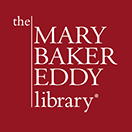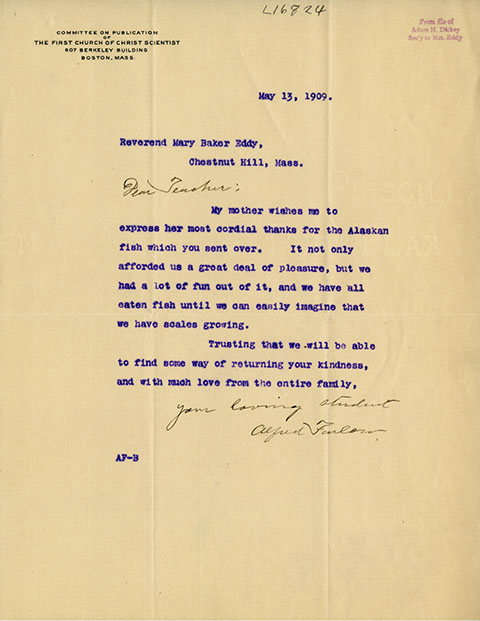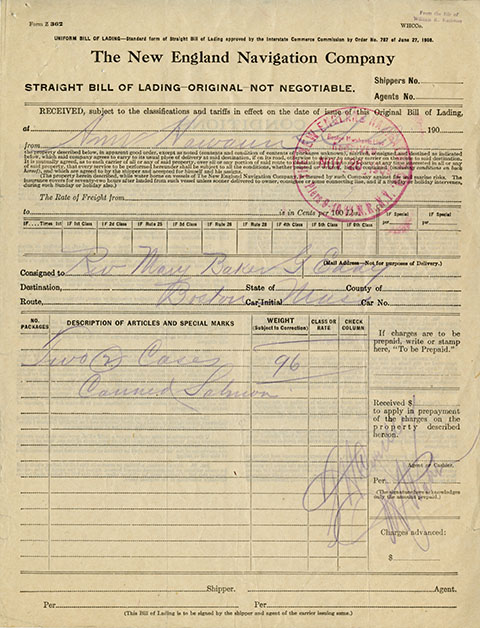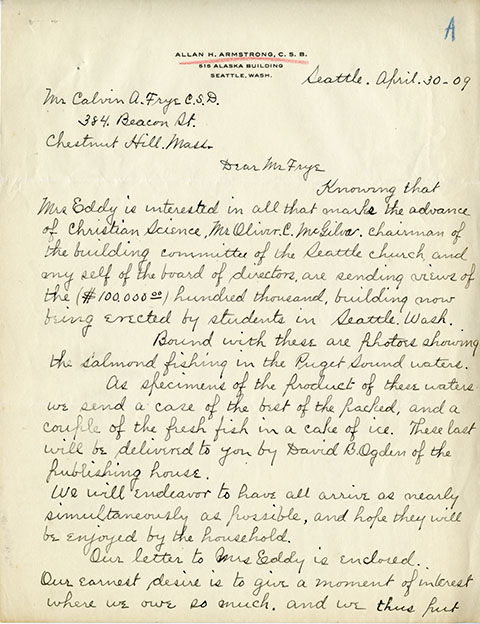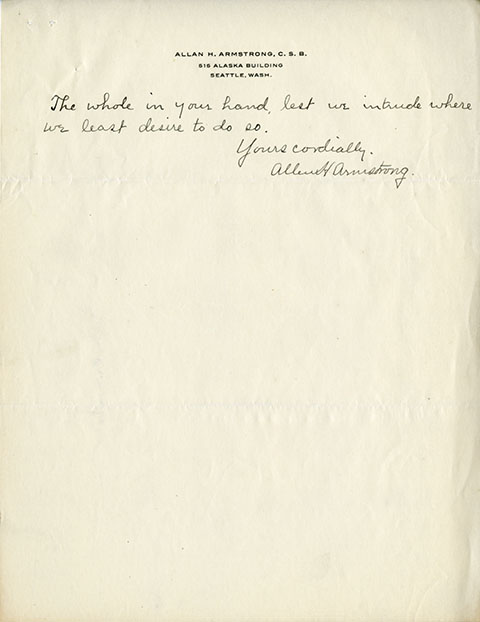Gifts from Puget Sound
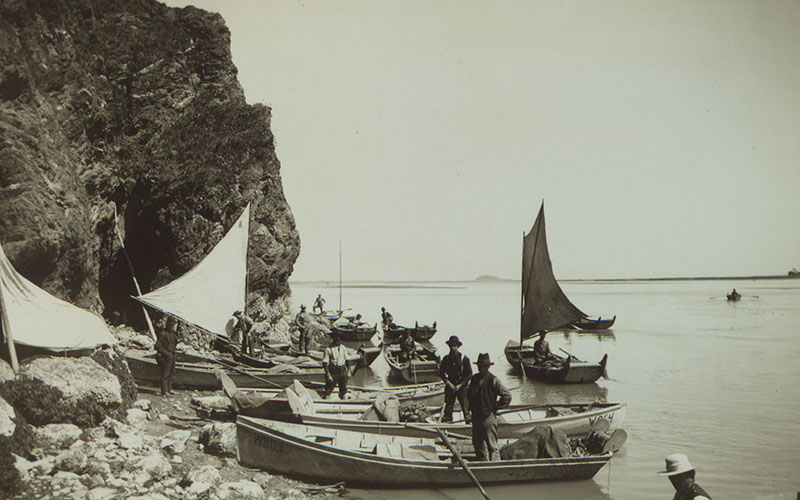
On May 5, 1909, Allen H. Armstrong and Oliver C. McGilvra, Christian Scientists from the Pacific Northwest, sent Mary Baker Eddy a leather-bound photo album (B00503). Two letters accompanied this gift—one addressed to Eddy and the other to her secretary, Calvin A. Frye. The album’s twofold purpose was (perhaps not surprisingly) to announce the construction of First Church of Christ, Scientist, Seattle, Washington, and (perhaps more unexpectedly) to share “a moment of interest” in the salmon industry of Puget Sound.
Armstrong and McGilvra were on the church’s building committee. This was the first Christian Science church established in Washington State. It had grown since Armstrong’s November 1899 move there from San Jose, California, at the request of The Christian Science Board of Directors.
Armstrong was a Christian Science practitioner and teacher. Seattle-born McGilvra was a successful lawyer and the son of John J. McGilvra, one of the city’s settlers. His wife, Maud, was a Mother Church member and also one of Armstrong’s students.1
The letter to Frye mentions another gift besides the photo album:
…we send a case of the best of the packed, and a couple of the fresh fish in a cake of ice… We will endeavor to have all arrive as nearly as simultaneously as possible, and hope they will be enjoyed by the household. Our letter to Mrs. Eddy is enclosed. Our earnest desire is to give a moment of interest where we owe so much and we thus put the whole in your hand, lest we intrude where we least desire to do so.2
We don’t know for sure when the fish arrived—but it is possible that Frye sent it on to Alfred Farlow, who served as Committee on Publication for The Mother Church in Boston. On May 13, 1909, Farlow wrote a letter to Eddy:
My mother [Pauline Farlow] wishes me to express her most cordial thanks for the Alaskan fish which you sent over. It not only afforded us a great deal of pleasure, but we had a lot of fun out of it, and we have all eaten fish until we can easily imagine that we have scales growing.3
Farlow’s reference to “Alaskan fish” may be based on labeling; there were two dozen fishing companies on Puget Sound around this time, including the Alaska Fish Company and Alaska Fishermen’s Packing Company.4
Armstrong and McGilvra must have been eager to share something uniquely Northwestern with Mary Baker Eddy and her household—as well as evidence that they were “fishers of men.” The photographs in this album illustrate how mechanization and transportation had opened up the fishing industry along the Pacific coast. It peaked in 1913, when the dangers of overfishing initially became known. For the first time, fish and other highly perishable foods could be shipped to all parts of the world. No doubt Farlow’s delight was not only in the taste of the fish (pickling and salting preparations had become less necessary) but also in the novelty of receiving a perishable item from a great distance.
That same year two cases of canned salmon entered the New York piers on November 26, addressed to Eddy. Was this that “case of the best of the packed” sent from First Church, Seattle? A different order that her household had requested? Or another gift? No matter the answer, the shipment represented increasingly accessible resources in the early twentieth century—and surely an enjoyable connection to the distant West Coast for a New Englander.
View selections from the album (PDF) (B00503)
- John J. McGilvra Papers, 1861-1926, Accession No. 4806-001, University of Washington Libraries, Special Collections, http://archiveswest.orbiscascade.org/ark:/80444/xv74223.
- Allen H. Armstrong to Mary Baker Eddy, 30 April 1909, IC 643.66.008.
- Alfred Farlow to Mary Baker Eddy, 13 May 1909, IC 006gP2.06.011.
- Clarence B. Bagley, History of Seattle: From earliest Settlement to 20th century, Volume 2, (Chicago: The S.J. Clarke Publishing Company, 1916), 405; William S. Jensen, The Salmon Processing Industry, Part One: The Institutional framework and its evolution (Corvallis, OR: Oregon State University Sea Grant College Program, 1976), 5.
